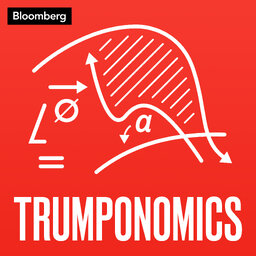Why New York's Summer of Hell Matters to More Than Commuters
New York subway riders and commuters, already mired in a miserable year, are bracing for a summer like no other amid rising delays, service cuts and overcrowding. It all underscores the perils of under-investment in rail systems that should be key drivers of growth. What the heck is going on? Can anything be done? Two guests think they have the answers: Jim Venturi, creator of the ReThinkNYC plan to overhaul regional transport links, and Tracy Gordon, senior fellow at the Urban-Brookings Tax Policy Center. Scott hosts along with Bloomberg City Hall reporter Henry Goldman.
 Trumponomics
Trumponomics


